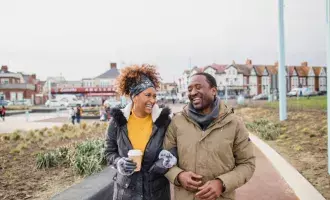In this series of local government Q&As, Ken Bean, Associate Director of Planning Policy at Capita Local Public Services, answers a series of questions about the national model design code and what challenges and opportunities this brings to local authority planning teams.
Q: Why is the Government introducing a national model design code (NMDC) and what will it achieve?
A: The NMDC provides detailed guidance that informs local design codes, guides and policies. It’s intended to help local planning authorities (LPAs) and communities to produce local design codes, guiding LPAs on the design parameters and key issues that they should consider, that they can then use to consider future development proposals.
LPAs have the flexibility to tailor local design codes and guidance to suit their own context and reflect local character. Effectively capturing and reflecting the views of the local community, as well as those of landowners and developers, is likely to be key to their success.
The Government is also recommending that each authority should have a chief officer for design and placemaking – further evidence of its desire to see design issues become more important.
Q: Is the NMDC available to use now and what happens next?
A: The Government is currently consulting on both a draft national code and accompanying guidance notes for design codes. It’s also consulting on a revised National Planning Policy Framework and most of the changes relate to the design quality of new development and respond to the recommendations of the Building Better, Building Beautiful Commission. These revisions are aimed at giving LPAs the power to say no to bad design. Comments are requested by 27th March 2021.
The Government is expected to publish the NMDC in the autumn, alongside a revised and consolidated Manual for Streets. Although it’s not a statement of national policy, the Government recommends that local authorities adopt the approach when preparing design codes and guides.
Q: So, what did the Planning White Paper (PWP) say about who will be responsible for design codes and how they will be used?
A: According to the PWP, the planning system will be “far more ambitious for the places we create, expecting new development to be beautiful”. It will do this by embedding local design codes into local plans so that new development “reflects the diverse character of our country, as well as what is provably popular locally”.
The intention is that codes will provide better quality development, which is more acceptable to local communities, and greater certainty for developers. The NMDC also fits in well with the PWP’s aspirations for a zoning approach to planning.
These documents can be created at a district, neighbourhood planning area, village or site level. Once they’re produced, local design codes will be given significant influence and weight in the design and determination of planning decisions. The PWP says that the Government intends to “make clear that designs and codes should only be given weight in the planning process if they can demonstrate that local input has been secured” and that, where this is the case, “we will also make clear that decisions on design should be made in line with these documents”.
The PWP states that, to make “design expectations more visual and predictable”, the Government will expect design guidance and codes to be prepared locally with meaningful community involvement, and ensure that codes are more binding on decisions about development. The community involvement will happen right at the start of each stage of the design code process, recognising that it’s essential that the local community has some effective input, and that empirical evidence of what is popular and characteristic in the local area is considered.
Q: Will all LPAs have to produce their own design code and what does the Government mean by “fast-track for beauty”?
A: While not compulsory, LPAs are strongly encouraged to produce them. The PWP says that “to ensure that schemes reflect the diverse character of our country, as well as what is popular locally, it is important that local guides and codes are prepared wherever possible”. This is also seen as helping to streamline the development management process by putting more emphasis on design issues agreed as part of development plan documents, thereby reducing the extent of consideration required for each individual planning application.
If local design guidance hasn’t been produced, LPAs will be expected to refer to the National Design Guide, NMDC and Manual for Streets.
“Fast-track for beauty” means applications for developments that reflect local character and preferences will be permitted. According to the PWP, schemes that comply with local design guides and codes will benefit under the proposed “fast-track for beauty”, having “a positive advantage and greater certainty about their prospects of swift approval”.
Q: What’s the recommended approach in producing design codes across a diverse area to distinguish between urban and rural settings?
A: Design codes should be based on a vision developed with the community, which will help to establish specific aims, preferences and the aspects of local character that are most valued. The NMDC explains that a design code may cover an entire local authority area, selected parts (such as existing built-up areas) or development sites. It’s also at the LPA’s discretion whether it has a single design code or separate codes for different areas / sites.
Following the initial scoping and analysis, area types can be identified through characterisation studies, which will form a coding plan. The coding plan will outline the area to be covered by the code and the specific area types, such as town centre, inner / outer suburb, urban green space, rural and so on. Guidance for area types is provided using key design parameters.
If the area type approach isn’t used, area-wide guidance will be provided for each issue or design parameter.
Q: From what you say, it sounds as though a lot will be expected of local authorities. In terms of design codes, what do you see as the main issues that LPAs will need to address over the next couple of years?
A: As ever, the key one is likely to be availability of resources. Having a sufficient number of suitably skilled staff readily available to produce local design codes and guidance, in particular. Many, particularly smaller, authorities don’t have a specialist employee resource dedicated to design; consequently, a number of LPAs are likely to need to re-train existing employees, recruit additional employees or rely on external support from consultants.
LPAs will also need to have extensive public engagement skills and methodology, which will be an additional strain on their resources.
It’s clear that, to get buy-in and support, creating design codes needs to be a joint collaborative enterprise. So LPAs will have to fully engage with local communities, landowners and developers, which may prove resource-intensive and time-consuming for LPAs that also have to produce up-to-date Local Plans for adoption by the end of 2023.

Ken Bean
Associate Director Planning Policy, Capita
Ken is our national lead for planning policy. Working at regional and local authority levels for over 30 years on strategic planning, development plans and planning casework, Ken has extensive experience of the English planning system. From 1987 until 2010 as a Civil Servant on pan-London issues, then at Enfield Council and Epping Forest District Council.







